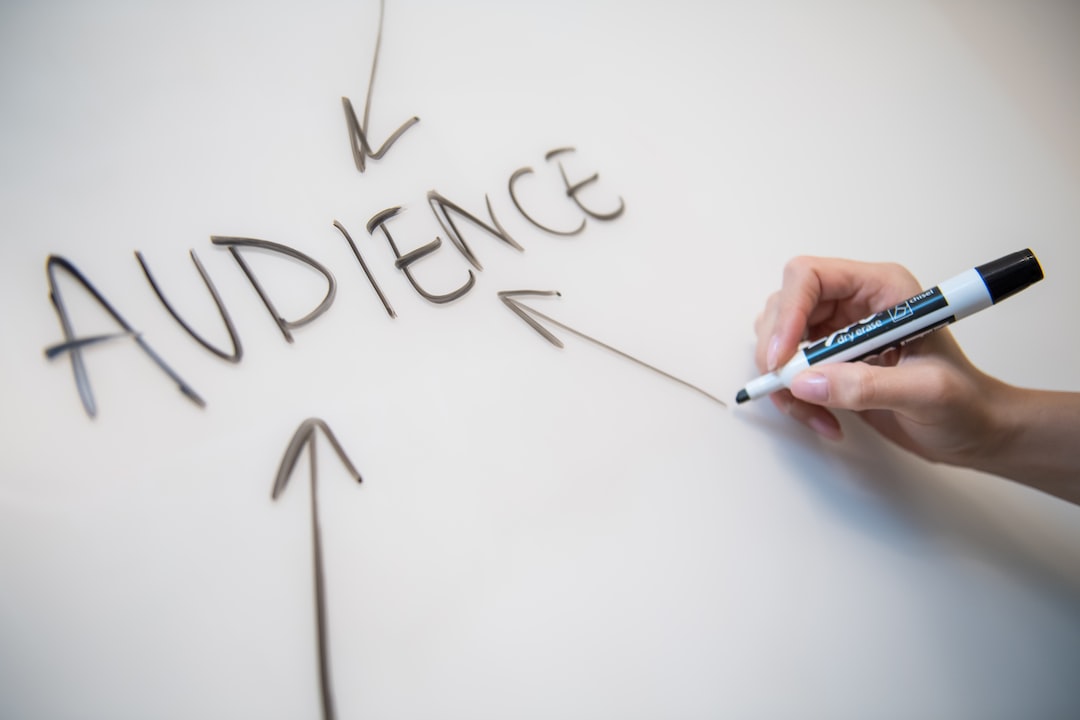No matter how much we’d like to think it’s true – marketers aren’t wizards, telekinetic mind-readers or psychologists proficient in classical conditioning. It’s really tough to get people to do the things you’d like them to. We blame free will.
It’s imperative to all businesses that visitors, readers, customers and leads take action; in order for business to generate viable revenue and stay afloat, they need people to take them up on the offers presented to them.
There’s a huge number of reasons why people don’t take your business up on your offer – maybe because it didn’t find them at the right time in the customer’s buying journey, or maybe because they found your approach too pushy. Maybe the offer wasn’t interesting enough, or maybe it’s because what your business is offering just isn’t up to snuff.
Table of Contents
ToggleHow to Define a “Call to Action”?
Action can mean a variety of things:
- Downloading an eBook or whitepaper on a topic your customer has been researching.
- Signing up for an email subscription or a seminar.
- Committing to attend an event or accept a coupon or special offer.
It sounds easy, but one of the hardest things to get people to do in our rushed world is commit. So how do we help people see the value in committing and learning more about a product or service online?
In this post, we’re going to strip back all of the misconceptions about what a Call to Action (CTA) is, and how to build the best CTA possible to engage and – more crucially – convert your interested visitors into warm leads that are interested in what you have to offer.
We may not be wizards, but we are great listeners and top-tier observers of people. Let us share what we’ve picked up along the way.
What Is a Call to Action?
Straight up, a call-to-action is a button, a line of text, or an image that’s sole purpose is to prompt and encourage visitors, readers and potential customers to, quite literally, take action.
A CTA is one of the most critically important tools in the arsenal of an inbound marketer, usually consisting of one image or button, but can, in some circumstances, mean multiple CTAs. A huge number of marketers and business owners immediately think that a simple “Download Here,” or “Click Here” button is the be-all-end-all way to entice people to click on their proposed offer – but they’re wrong.
A variety of important factors go into creating and developing the perfect CTA for every individual offer; getting people to click on the button isn’t as easy as the concept suggests, because you’ll need to motivate and direct your customer to take action at a specific time, at a specific place, while reading specific content, in exchange for very specific rewards. Not all CTAs are effective at converting prospective customers because they’re too pushy, located in the wrong place, say the wrong thing, or don’t offer enough to their readers.
For example: let’s imagine you’re a manufacturer of performance racing tires. You’ve developed a fantastic ebook on the importance of traction that outlines the advantages of your product. A good metaphorical CTA would be to make an offer to prospective racers in a tire shop with an invitation to attend a track day where vehicles will be equipped with your product.
A poorly placed metaphorical CTA would be to approach people during winter, when you should be pitching the advantages of snow tires, not performance racing tires. Why? The timing is off, and the benefit of the product isn’t relevant. The perceived conversion rate would plummet by contrast, because no one would bother committing to a track day in the snow.
According to an Econsultancy report published in 2016, only 22% of businesses are ultimately satisfied with their conversion rates. Further, for every $92 spent acquiring customers, only $1 is spent of converting them. What’s worse, BrightTalk tell us that 80% of marketers report their lead generation efforts are only slightly or somewhat effective – meaning CTA conversions can really struggle.
What is the Role of a CTA?
The role of a CTA is to entice readers to take an action from your content. A CTA lends itself to the Conversion stage of the overall Inbound methodology by turning visitors into leads. When a website visitor is converted, the CTA has successfully helped them progress further down the sales funnel and towards their purchasing decision.
The main purpose of a CTA is to collect contact information – an extremely valuable currency to your marketing efforts. To attain that information, you must provide a great reward by offering something of value – ideally, related to their point of interest. Without a valuable offer coupled to an engaging CTA, you’ll have a difficult time generating leads.
Further, a CTA needs to clearly state the reward for filling out a form, providing contact info, or clicking the button or image depicted on the screen. This special something, whether it be an invitation, an ebook, or a better offer, doesn’t need to be ground-breaking, but needs to possess enough perceived value to make it a relevant suggestion; plus, the offer should prompt initiative quickly.
As a critical part of the “Convert” stage of the inbound marketing methodology, the CTAs role is to convince the visitor that the brand or organization making an offer is worthy of their time and contact info. Additionally, a CTAs role is to warm the lead for the sales team, ushering them along to the Close stage where they ultimately turn into customers, not just visitors.
How Should a CTA Perform? (The Anatomy of a Call to Action)
According to Go-Globe, 47% of websites have clear CTAs that only take users 3 seconds or less to use. This means that good CTAs don’t need to be pushed on visitors too hard – they should work and translate into clicks and lead generation almost instantaneously – but most websites have immense difficulty getting people to click the button!
Why? Chances are the components of their CTA are missing the final touches that help convert visitors.
What is the Purpose of a CTA?
All CTAs need a clearly defined purpose, much like an email subject, a book title, or a tagline. The purpose of a CTA is always to get the reader to click the button, but it’s not always that simple. To help a CTA live up to its purpose, ask yourself three pivotal questions before going live with your CTA.
- What do I want the visitor to do?
- How are they going to know what to do?
- Why should they bother?
These questions help clearly define the purpose of using a CTA in your b2b marketing efforts. The CTA should clearly define what you want your visitor to do, and what they’ll receive for giving you their time.
Language & Design Matter
The language and design that you choose to represent your CTA speak loudly to your intent, but they’re very much a team that depend on each other. While a good design may help to sway some eyes and attention to your CTA, poor language execution may lose them when the reward isn’t clearly defined. Alternatively, your language and textual prompt may be perfect, but a dull and uninspiring design may not help you translate reader interest into leads.
Weak language is a common problem that many marketers make when designing CTAs. Boring and uninspired text like Download Here, Click Here, or Buy Here may spell out exactly what you want the reader to do, but it doesn’t give much incentive to take action.
Download Here describes perfectly that an ebook or whitepaper may be available to interested clickers, but it doesn’t accurately describe the perceived value of the offering. Buy Here could tell people that by clicking, they’ll end up spending money, and if the lead isn’t warm enough you run the risk of losing them before having a chance to showcase your reward.
More descriptive, intriguing, and interesting CTA language can include language like:
- Shop Summer Collection Now
- Show Me Member Perks
- Get Your 50% Discount Today
- Learn More
Using the word “Shop” has much less of a feeling of commitment than “Buy” because it’s a lower commitment word. Shopping suggests considering what to purchase, while buying is relatively set in stone. Litmus concluded in 2012 that the vast majority of successful CTAs use low commitment language propositions to garner the best responses from curious visitors. When testing CTA language, they found that total clicks increased by 75% when language promoted education and learning, rather than features.
Fonts & Colors
Deciding what colors and fonts to use on your CTAs will largely depend on your brand or organization’s pre-existing style and aesthetic, but you can always benefit from looking critically at how to generate a good amount of oomph.
Consult classical color theory to help distinguish which colors will emphasize the presence of your CTA on the page. Complementary colors like blue and orange will help to draw attention to the CTA button so it doesn’t get lost in the fray – when a reader can’t find the offer, how could they possibly click on it? You can also draw attention to the CTA by making the text bolder and bigger to differentiate it from the rest of the page; don’t go too crazy, but certainly make it noticeable.
When it comes to selecting a font, consult a good typography guide to educate yourself on which fonts inspire confidence – you’d be surprised how a simple typeface can affect your ability to generate leads and trust. A 2012 study from the New York Times found that identical information published in different fonts yielded different takes on the validity of the content. Compared to Comic Sans and Helvetica, Baskerville showed a 1.5% increase in agreement. While that doesn’t sound like much, imagine that number translated into sales figures.
Where Do CTAs Work Best on a Website?
Above or below the fold, that is the question.
Where your CTA is located also helps it perform a certain way. Neil Patel paraphrases an eye-tracking study conducted by the Nielsen Norman Group, that found people follow a distinct F-shaped pattern while reading website copy. From 232 people who were recorded, the study found they read the page horizontally across the upper screen, before moving to a second horizontal movement in the middle of the page, before systematically scanning vertically.
Patel observes that these eye-movements take place above the fold, meaning that placing a CTA in the upper right corner of the screen experiences a boosted click-rate. Patel also notes that a test conducted by Content Verve placed a CTA below the fold, a location that generated a conversion lift of 304%
Your CTA should be placed wherever it will successfully influence the decision-making process of your visitors. As a rule, complex products and services – like cameras, software, or other tech gadgets – can successfully be placed below the fold because they require more education and highlighted features than simpler products, which can successfully be placed on top of the fold. Whatever you choose to do, depending on what you’re offering or selling, buttons must be easy to locate.
The Importance of Landing Pages
CTAs are often designed to be included on landing pages, and in their purest form are simply pages that visitors can ‘land’ on. They are distinct from your webpage and act as standalone pages designed with one primary objective in mind – engaging the prospect.
There are two types of landing pages that may feature CTAs: lead-generation pages and click-through pages. Lead generation pages are designed specifically to collect customer data that will allow you to track, communicate with, and learn from your qualified leads by offering a reward for signing up. Meanwhile, a click-through landing page has a primary goal of getting users to click-through to another page, as the name would imply. Click-through pages can be used to describe products or services to warm up a prospect to help prep them for a purchasing decision.
Unbounce tells us that there are 5 key elements that landing pages must possess to be successful:
- A Unique Selling Proposition (USP) comprised of:
- A main headline
- Supporting headline
- A statement that reinforces the benefits of pursuing the proposed offer.
- A convincing closing argument
- Good visual content like high-quality images and/or video
- The benefits of your offer
- Social proof like a customer testimonial to reinforce those benefits
- A single conversion goal / CTA button
The bottom line is, landing pages help to increase conversion rates and serve as the perfect home to make great offers to your prospective customers.
Landing pages target promotion, and MUST match the intent of the content that got your reader to the page in the first place – so be sure to align your messaging by reiterating the core benefits of your product and the offer found on the landing page. Marketing material must be up-to-date and align closely with your brand; users need to feel safe and confident about clicking through to your landing page and when they agree to subscribe to your blog, or download that ebook. Landing pages are all about establishing and materializing trust.
Top CTA Tools & Resources
The following are our favourite tools for crafting the prefer Call to Action:
- Canva
- A powerful, dedicated online design tool, Canva offers CTA creation via its custom visual element customization tools. Through its Design School, Canva offers interactive tutorials and tips on how to create visuals geared at maximizing conversion and user interaction.
- Unbounce
- An innovative and sophisticated landing page builder and conversion marketing platform, Unbounce helps you build, launch and optimize custom landing pages and CTAs for any type of campaign conceivable. It goes the extra mile by matching your existing branding to seamlessly customize every element. All of their landing page templates are mobile responsive and the drag-and-drop build process makes construction of conversion-ready pages a snap.
- Marketing Free
- Formerly HubSpot’s Leadin, this is an easy-to-use marketing automation and lead tracking plugin for WordPress that helps businesses better interpret the behaviors of website visitors. It works by automatically finding publicly available info on your contacts to give you more context on how to better engage with them.
- PowerPoint CTA Templates by Hubspot
- Created by Hubspot, this downloadable resource offers 50 free call-to-action templates designed specifically to cater to a number of different lead-generation arenas. The templates include social share CTAs to help drive engagement, social sentiment CTAs that include public testimonials, and nine contextualized calls-to-actions that explain the value behind your proposition.Further, Hubspot has included photo and mobile device CTAs that allow you to overlay text, making your designs more advanced and visually appealing to your mobile target demographic.
- Inbound Now
- Another WordPress plug-in, Inbound Now is used by over 40,000 sites as a powerful, free, add-on to your existing WordPress platform. Inbound Now not only includes email and landing page templates, but call-to-action templates as well, helping to streamline your lead conversion efforts. The plug-in also features lead tracking and an optimized A/B Test to help you make marketing-driven decisions based on pure data. Lastly, it was designed to integrate with your existing marketing automation tools, or as a stand-alone program, making it an adaptable powerhouse.
- MailChimp
- MailChimp is an all-encompassing marketing automation platform that integrates email, design, analytics, A/B testing, and comprehensive mobile options positioned to help you sell more products faster. The platform also features and recognizes the importance of calls-to-action and clickable buttons to engage your visitors.
- Template Monster
- An easy-to-use and powerful engagement system designed to help you turn traffic into revenue. Template Monster features aesthetically stunning landing page templates divided into categories to help you narrow down the perfect choice – sans design sense.
- LeadPages
- Free-to-the-public landing page templates made simple by LeadPages. Their list of the ultimate free landing page templates helps to narrow down the sea of vast choice, and allows you to tailor and customize your own page without having to type a single line of code.
CTA’s in a Nutshell
Marketers may not be wizards, but we do understand the magic of respecting people’s time.
B2B Lead generation is tough. We know that. But what isn’t tough is knowing that your website visitors and prospective clients want to be compensated for their time and business.
If you want them to invest their energy in your business, product or service, you’ll have to pony up a great, benefits-laden call-to-action that’s pain-free. It’s gotta be quick. It’s got to provide value and be free of confusion and pain-points.
We’ve said it once, and we’ll continue saying it repeatedly: people deserve respect. A call-to-action is only as convincing as the effort that’s put into it, and to translate interest into qualified leads that will usher people down the proverbial buyer’s rabbit hole, marketers need to make landing pages and their clickable offers interesting, engaging, and worthwhile. To generate leads, put your best foot forward and put some good old-fashioned elbow grease into your CTA initiatives.
Remember, you’ve gotta give respect to get it.











